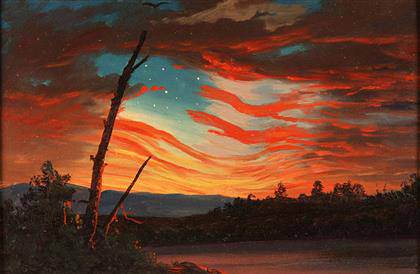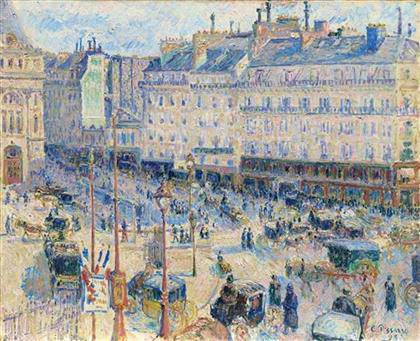
Frederic Edwin Church
Our Banner in the Sky, 1861

Timothy O’Sullivan
A Harvest of Death, Gettysburg, July 1863
The Civil War and American Art – Metropolitan Museum The major loan exhibition ‘The Civil War and American Art’, on view at The Metropolitan Museum of Art from May 27 to September 2, 2013, considers how American artists responded to the Civil War and its aftermath.]]>
Source: The Metropolitan Museum of Art
Some of the most important and powerful examples of 19th-century American art were made in the years surrounding and during the Civil War. And yet, very few of these works actually depict battle scenes. The exhibition “The Civil War and American Art” examines outstanding landscapes, genre paintings, and photographs to identify their many layers of meaning. Because the conflict so deeply affected America’s character and visual culture, artists encoded its significance and implications in their works, even when they did not appear to address the war directly.
Usually identified with grandiose landscapes, Frederic Edwin Church may have created the small-scale work “Our Banner in the Sky” (1861, Collection of Fred Keeler) in response to the valiant defense of the American flag during the Confederate shelling of Fort Sumter on April 12–14, 1861, the event that initiated the Civil War. On May 19, 1861, the New York Daily Tribune noted, “Mr. Church has been painting a symbolical landscape embodying the stars and stripes. It is an evening scene, with long lines of red and gold typifying the stripes, and a patch of blue sky with the dimly-twinkling stars in a corner for the Union.”
Despite the difficulties of transporting their photographic equipment and supplies to a war zone, several American photographers established their reputations by capturing the grim reality of death on the battlefield. Timothy O’Sullivan’s best-known work —”A Harvest of Death, Gettysburg, July 1863″— shows two dozen fallen soldiers lying where they died on the field of battle. A face, the hands, and details of the clothing of soldiers in the foreground are in sharp focus, while other figures in the background—presumably soldiers guarding the area—nearly disappear into the haze.
After the war, works such as Albert Bierstadt’s “Looking Down Yosemite Valley, California” (1865, Birmingham Museum of Art) addressed the nation’s hopes for the future. The sun’s golden rays bathe the unspoiled wilderness in this majestic landscape, which—unique among Bierstadt’s many paintings of Yosemite—is devoid of animals or humans. This is a new Eden that promises renewal and healing after the trauma of war and sectarian strife.
Related content
Photography and American Civil War at the Metropolitan (exhibition, 2013)
Follow us on:


